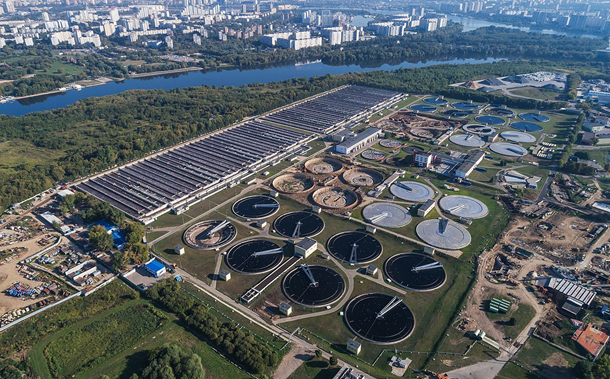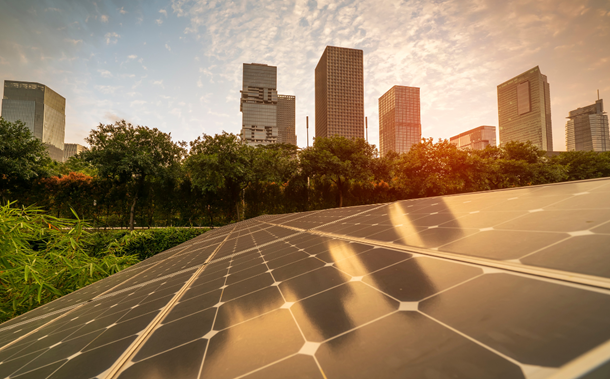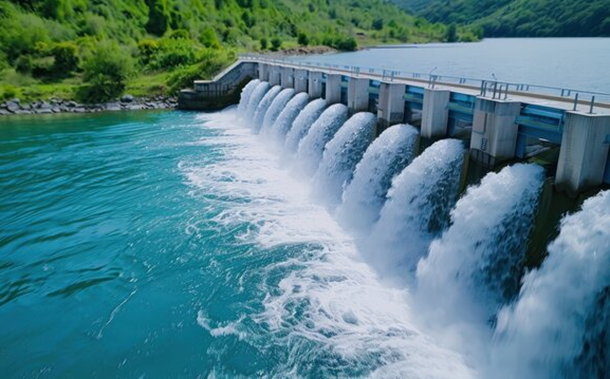Experimental Study on Strength and Performance of Foamed Concrete with Glass Powder and Zeolite
Downloads
Doi:10.28991/CEJ-2024-010-12-06
Full Text:PDF
Downloads
[2] Jones, M. R., & McCarthy, A. (2005). Utilising unprocessed low-lime coal fly ash in foamed concrete. Fuel, 84(11), 1398–1409. doi:10.1016/j.fuel.2004.09.030.
[3] Chica, L., & Alzate, A. (2019). Cellular concrete review: New trends for application in construction. Construction and Building Materials, 200, 637–647. doi:10.1016/j.conbuildmat.2018.12.136.
[4] Chica, L., Mera, C., Sepúlveda-Cano, L. M., & Alzate, A. (2022). Porosity estimation and pore structure characterization of foamed cement paste using non-specialized image digital processing. Materials and Structures/Materiaux et Constructions, 55(7). doi:10.1617/s11527-022-02031-6.
[5] Jones, M. R., & McCarthy, A. (2006). Heat of hydration in foamed concrete: Effect of mix constituents and plastic density. Cement and Concrete Research, 36(6), 1032–1041. doi:10.1016/j.cemconres.2006.01.011.
[6] Nambiar, E. K. K., & Ramamurthy, K. (2007). Sorption characteristics of foam concrete. In Cement and Concrete Research (Vol. 37, Issue 9, pp. 1341–1347). doi:10.1016/j.cemconres.2007.05.010.
[7] Nambiar, E. K. K., & Ramamurthy, K. (2006). Influence of filler type on the properties of foam concrete. In Cement and Concrete Composites (Vol. 28, Issue 5, pp. 475–480). doi:10.1016/j.cemconcomp.2005.12.001.
[8] Wei, S., Yunsheng, Z., & Jones, M. R. (2014). Using the ultrasonic wave transmission method to study the setting behavior of foamed concrete. Construction and Building Materials, 51, 62–74. doi:10.1016/j.conbuildmat.2013.10.066.
[9] Tarasov, A. S., Kearsley, E. P., Kolomatskiy, A. S., & Mostert, H. F. (2010). Heat evolution due to cement hydration in foamed concrete. Magazine of Concrete Research, 62(12), 895–906. doi:10.1680/macr.2010.62.12.895.
[10] Kunhanandan Nambiar, E. K., & Ramamurthy, K. (2008). Fresh state characteristics of foam concrete. Journal of materials in civil engineering, 20(2), 111-117.. doi:10.1061/(asce)0899-1561(2008)20:2(111).
[11] Chindaprasirt, P., & Rattanasak, U. (2011). Shrinkage behavior of structural foam lightweight concrete containing glycol compounds and fly ash. Materials and Design, 32(2), 723–727. doi:10.1016/j.matdes.2010.07.036.
[12] Ramamurthy, K., & Narayanan, N. (2000). Influence of composition and curing on drying shrinkage of aerated concrete. Materials and Structures/Materiaux et Constructions, 33(4), 243–250. doi:10.1007/bf02479334.
[13] Cho, S., Kruger, J., van Rooyen, A., Zeranka, S., & van Zijl, G. (2020). Rheology of 3D Printable Lightweight Foam Concrete Incorporating Nano-Silica. Rheology and Processing of Construction Materials. RheoCon SCC 2019 2019, RILEM Bookseries, 23, Springer, Cham, Switzerland. doi:10.1007/978-3-030-22566-7_43.
[14] Krämer, C., Schauerte, M., Kowald, T. L., & Trettin, R. H. F. (2015). Three-phase-foams for foam concrete application. Materials Characterization, 102, 173–179. doi:10.1016/j.matchar.2015.03.004.
[15] Sarı, A., Nas, M., Yeşilata, B., Ustaoğlu, A., Erdoğmuş, E., Torlaklı, H., Hekimoğlu, G., & Gencel, O. (2024). A novel cement mortar comprising natural zeolite/dodecyl alcohol shape stable composite phase change material for energy effective buildings. Journal of Energy Storage, 87, 111266. doi:10.1016/j.est.2024.111266.
[16] Gökçe, H. S., Hatungimana, D., & Ramyar, K. (2019). Effect of fly ash and silica fume on hardened properties of foam concrete. Construction and Building Materials, 194, 1–11. doi:10.1016/j.conbuildmat.2018.11.036.
[17] Lim, S. K., Tan, C. S., Li, B., Ling, T. C., Hossain, M. U., & Poon, C. S. (2017). Utilizing high volumes quarry wastes in the production of lightweight foamed concrete. Construction and Building Materials, 151, 441–448. doi:10.1016/j.conbuildmat.2017.06.091.
[18] Falliano, D., Restuccia, L., Ferro, G. A., & Gugliandolo, E. (2020). Strategies to increase the compressive strength of ultra-lightweight foamed concrete. Procedia Structural Integrity, 28, 1673–1678. doi:10.1016/j.prostr.2020.10.141.
[19] Feng, S., Gao, Y., Xiao, H., & Xue, C. (2024). Influence of fibers and bubble structure on thermal conductivity and mechanical performances of foam concrete. Construction and Building Materials, 445, 137956. doi:10.1016/j.conbuildmat.2024.137956.
[20] Feng, N. Q., & Peng, G. F. (2005). Applications of natural zeolite to construction and building materials in China. In Construction and Building Materials (Vol. 19, Issue 8, pp. 579–584). doi:10.1016/j.conbuildmat.2005.01.013.
[21] Chandni, T. J., & Anand, K. B. (2018). Utilization of recycled waste as filler in foam concrete. Journal of Building Engineering, 19, 154–160. doi:10.1016/j.jobe.2018.04.032.
[22] Song, Q., Zou, Y., Zhang, P., Xu, S., Yang, Y., Bao, J., Xue, S., Liu, J., Gao, S., & Lin, L. (2025). Novel high-efficiency solid particle foam stabilizer: Effects of modified fly ash on foam properties and foam concrete. Cement and Concrete Composites, 155, 105818. doi:10.1016/j.cemconcomp.2024.105818.
[23] Seraj, S., Ferron, R. D., & Juenger, M. C. G. (2016). Calcining natural zeolites to improve their effect on cementitious mixture workability. Cement and Concrete Research, 85, 102–110. doi:10.1016/j.cemconres.2016.04.002.
[24] Nambiar, E. K. K., & Ramamurthy, K. (2007). Air-void characterisation of foam concrete. In Cement and Concrete Research (Vol. 37, Issue 2, pp. 221–230). doi:10.1016/j.cemconres.2006.10.009.
[25] She, W., Du, Y., Miao, C., Liu, J., Zhao, G., Jiang, J., & Zhang, Y. (2018). Application of organic- and nanoparticle-modified foams in foamed concrete: Reinforcement and stabilization mechanisms. Cement and Concrete Research, 106, 12–22. doi:10.1016/j.cemconres.2018.01.020.
[26] Du, H., & Tan, K. H. (2017). Properties of high volume glass powder concrete. Cement and Concrete Composites, 75, 22–29. doi:10.1016/j.cemconcomp.2016.10.010.
[27] Elaqra, H. A., Al-Afghany, M. J., Abo-Hasseira, A. B., Elmasry, I. H., Tabasi, A. M., & Alwan, M. D. (2019). Effect of immersion time of glass powder on mechanical properties of concrete contained glass powder as cement replacement. Construction and Building Materials, 206, 674–682. doi:10.1016/j.conbuildmat.2019.02.110.
[28] Karakurt, C., Kurama, H., & Topçu, I. B. (2010). Utilization of natural zeolite in aerated concrete production. Cement and Concrete Composites, 32(1), 1–8. doi:10.1016/j.cemconcomp.2009.10.002.
[29] Mahmoud Hama, S. (2021). Evalutions of strengths, impact and energy capacity of two-way concrete slabs incorprating waste plastic. Journal of King Saud University - Engineering Sciences, 33(5), 337–345. doi:10.1016/j.jksues.2020.09.007.
[30] Valipour, M., Pargar, F., Shekarchi, M., & Khani, S. (2013). Comparing a natural pozzolan, zeolite, to metakaolin and silica fume in terms of their effect on the durability characteristics of concrete: A laboratory study. Construction and Building Materials, 41, 879–888. doi:10.1016/j.conbuildmat.2012.11.054.
[31] Xu, Y., Yao, L., & Yu, X. (2024). Effect of polypropylene fibers on mechanical and wetting properties of overall superhydrophobic foamed concrete. Construction and Building Materials, 448, 138207. doi:10.1016/j.conbuildmat.2024.138207.
[32] Dora, S., Kuznik, F., & Mini, K. M. (2025). A novel PCM-based foam concrete for heat transfer in buildings -Experimental developments and simulation modelling. Journal of Energy Storage, 105, 114625. doi:10.1016/j.est.2024.114625.
[33] Cao, W., Lv, X., Li, J., Lu, J. X., Moon, J., & Poon, C. S. (2024). Enhancing the mechanical and thermal properties of foam concrete by incorporating glass lightweight microspheres. Construction and Building Materials, 447, 138103. doi:10.1016/j.conbuildmat.2024.138103.
- Authors retain all copyrights. It is noticeable that authors will not be forced to sign any copyright transfer agreements.
- This work (including HTML and PDF Files) is licensed under a Creative Commons Attribution 4.0 International License.![]()














